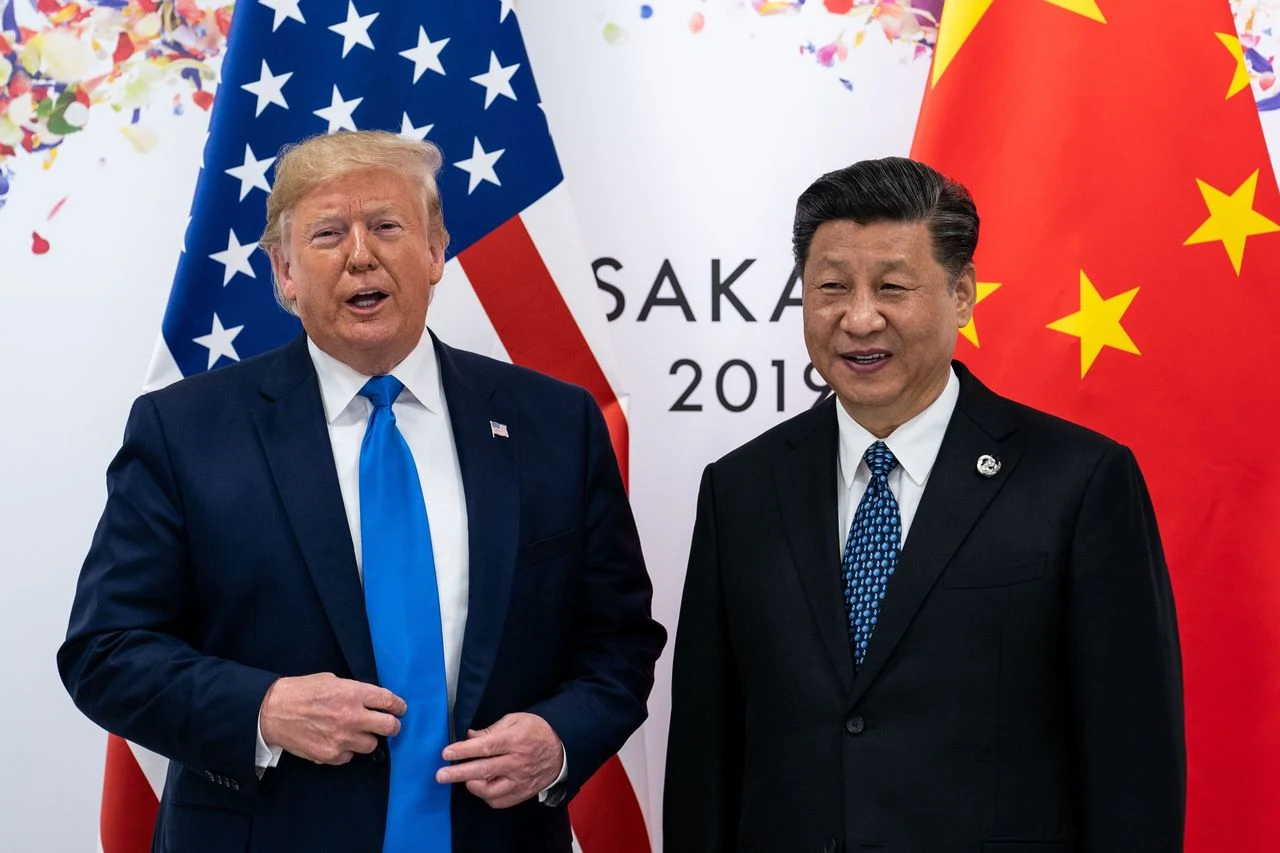President Trump and Chinese President Xi Jinping have agreed on a deal that will end the first phase of a trade war between the world’s la...
 |
| President Trump and Chinese President Xi Jinping have agreed on a deal that will end the first phase of a trade war between the world’s largest economies. Credit... Erin Schaff/The New York Times |
Treasury Secretary Steven Mnuchin said on Wednesday morning that the deal was a “very significant agreement,” saying it accomplishes several big goals and is enforceable. Mr. Mnuchin said that there will be no additional tariff relief for China unless the next phase of the trade deal — one that addresses more structural issues — is signed and he warned that if China does not honor its promises, Mr. Trump will escalate tariffs.
An initial pact, cooling tensions in an election year, follows months of escalating tariffs and a trade war that seemed as if it would never end.“This gives China a big incentive to get back to the table and agree to the additional issues that are still unresolved,” Mr. Mnuchin told CNBC. The deal will cap more than two years of tense negotiations and escalating threats that at times seemed destined to plunge the United States and China into a permanent economic war. Mr. Trump, who campaigned for president in 2016 on a promise to get tough on China, pushed his negotiators to rewrite trade terms that he said had destroyed American industry and jobs, and he imposed record tariffs on Chinese goods in a gamble to get Beijing to accede to his demands.
The president’s approach may pay off politically. He will head into a re-election campaign with a commitment from China to strengthen its intellectual-property protections, make large purchases of American products and pursue other economic changes that will benefit American business.
But the agreement has plenty of critics in both parties, who say that Mr. Trump’s tactics have been haphazard and economically damaging, and that the agreement leaves the most important economic issues unresolved.
In particular, the Chinese have rebuffed requests for broader changes to the structure of their economy. That includes a pattern of subsidizing and supporting key industries, like solar and steel, that American firms say have allowed China to dump cheap products it makes into the United States.
The deal also does not address cybersecurity or China’s tight controls over how companies handle data and cloud computing. China rejected American demands to include promises to refrain from hacking American firms in the text, insisting it was not a trade issue.
The administration has said it will address some of these changes in Phase 2 of the negotiations and is keeping tariffs in place in part to maintain leverage for the next round of talks. But Mr. Trump has already kicked the deadline for another agreement past the November election, and there is deep skepticism that the two countries will reach another trade deal anytime soon. Mr. Mnuchin said on Wednesday that even if additional phases of the agreement do not happen, the first phase will have been worth it. But he added that the Trump administration hopes to address some of the thornier issues that are outstanding in the coming year. In the interim, the remaining tariffs will continue to inflict financial pain on American businesses that rely on Chinese imports and the consumers who buy their products.
The trade deal contains a variety of wins for American industry, including opening up markets for financial services, pharmaceuticals, beef and poultry. China has committed to increasing its purchases of food, energy, manufactured goods and services by $200 billion over two years, though many analysts say that figure appears unrealistic given what the United States currently produces. China has also committed to not forcing American companies to hand over their technology as a condition of doing business there, under penalty of further tariffs. Beijing has also promised to refrain from devaluing its currency, the renminbi, to gain an advantage in export markets, among other pledges.
Those terms appear likely to benefit American companies and increase exports in coming months, potentially narrowing the trade deficit with China, which has become a focal point for Mr. Trump.
But those wins have come at a heavy price. The uncertainty created by Mr. Trump’s tariff threats and approach to trade has weighed on the economy, raising prices for businesses, delaying corporate investments and slowing growth around the globe. Businesses with exposure to China, like Deere & Company and Caterpillar, have cut some workers and lowered revenue expectations, in part citing the trade war.
Clete Willems, a partner at Akin Gump who left the White House last year, said the deal was important for proving that the United States and China could solve problems with each other despite disagreements and heightened tensions. “We didn’t fix every single problem with China in this agreement, there is no question about that,” Mr. Willems said. “But what was done is really significant.”Mr. Trump and Liu He, China’s vice premier, are expected to sign the deal at the White House at 11:30 a.m.







